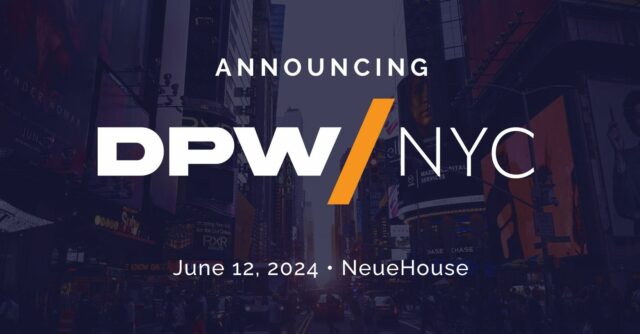By Joonas Jantunen, CEO Cloudia Middle East & Africa, Cloudia.
Former Hewlett-Packard CEO, Lew Platt, once famously said: “If HP knew what HP knows, we’d be three times more productive.”
Managing knowledge, or knowing what you know, and being able to apply it to core decision-making is key to business success now and in the future. In procurement, knowledge management already has the potential to drive productivity gains across the business. And emerging technologies like AI and RPA look set to play an outsized role.
What do we mean by knowledge management?
Every day, every moment, organisations and their operating environments are creating, using and sharing, huge amounts of information, or knowledge. Knowledge management, most simply put, refers to the process of collecting, maintaining and managing everything that a company ‘knows,’ in all its forms. But knowledge management is also about using that knowledge to help leaders make more informed decisions. In this article, we are considering knowledge management in this wider sense.
In any organisation, knowledge is power but only when it is well managed and usefully applied. In procurement, knowledge becomes power when it’s effectively managed for the purpose of driving decision-making. That means, identifying what information is critical to operations, analysing it, then sharing the findings with key decision-makers across the company.
What does this mean in practice for procurement?
In procurement today, knowledge management typically begins with process automation, aimed at reducing routine administrative work and freeing up procurement people to focus on innovation and productivity. Automation also equips organisations with the capacity to adapt and take advantage of new technologies as they develop.
The vast majority of data management applications currently available focus on storing and presenting historical data – telling us ‘what happened’. Naturally, it’s important to know about past events to aid future management strategy, but all too often the data analysis and interpretation itself is left entirely to humans, with our limited capacity for processing large amounts of information. Also, it’s not possible to effectively exploit even the most basic historical data in practice unless the organisation’s procurement systems and processes have been digitised, and an adequate amount of historical data accumulated.
Emerging technologies assist knowledge management in multiple ways
When artificial intelligence (AI) is mentioned, often the first thing that comes to mind is robots making decisions on our behalf or undertaking roles previously performed by humans. Indeed, it has been predicted that robots are likely to replace many service-sector jobs, among other things. However, it’s worth remembering that predictions are based on assumptions of what might happen in terms of advances in AI and it’s challenging to predict the pace at which these advances would take place.
In the short term, the situation looks less exciting. At the moment, the most significant strength of AI is its ability to handle huge amounts of data from various sources and to establish links among different factors. Another remarkable aspect of AI is the speed at which it is able to identify and produce text, sound and image. As it stands, AI is best suited for optimising existing processes and behavioural models on which an organisation already has plenty of high-quality data.
AI helps manage, cultivate and discover procurement knowledge
AI and its various applications, especially robotic process automation (RPA), can significantly speed up data collection and assembly. In addition to the information that’s entered into the system and generated during the daily procurement activities, RPA is also able to cultivate new information. Useful information can be gathered about various relevant factors, such as the market, operating environments, pricing, currency fluctuations, any changes to contracts or suppliers, as well as other operators or events within the same business sector.
With the help of automation, the data can be assembled, categorised according to context, and merged and stored without human interference. As a result, the process of data discovery will be significantly quicker and more straightforward. Technology can also be harnessed to keep different levels of management up-to-date with the latest information regarding, for example, various organisational units, or changes to contracts or consignments. As a result, management will always have access to real-time knowledge of any breaches of contract or disruptions in the supply chain.
Diagnostic analytics explains why something happened
The next level of knowledge management is reached when technology is exploited to help understand the causes of events and certain behaviours. Diagnostic analytics examines data or content to answer the question ‘Why did this happen?’. When there is a better understanding of what happened, information can be used to find and detect a variety of recurring formulas and patterns, which help control and redirect operations more accurately.
For example, if the same suppliers always succeed or fail to fulfil the terms and conditions of specific product categories, the valuable information provided by diagnostic analytics can help target investment toward the most reliable suppliers. Similarly, understanding the changes in supply and demand, under certain conditions in different product categories, will help schedule the procurement process more efficiently. Diverse procurement procedures and market fluctuations have an impact on the price level of bids, but by analysing trends and past events, it is possible to get both the procedure and the timing right.
Predictive analytics explains what’s going to happen
Any organisation wishing to succeed needs to have foresight. Predictive analytics is a level up from analysing the past, as the focus is on developing and automating forecasts and probabilities based on current events. Those in charge of procurement can use the knowledge to predict and prepare for various outcomes and direct their actions accordingly.
Once the analytics has discovered why something happened, it will be able to draw conclusions and predictions about what is going to happen next. As an example, it’s possible to predict that when certain changes occur on the market, certain suppliers will perform better (or worse) in relation to certain contractual terms, or if the price or availability of a certain product category is projected to reduce.
Prescriptive analytics explains what should be happening
A high level of procurement knowledge management is achieved when technology can be employed to tell what should be done next. AI and its various applications can efficiently simulate human behaviour and learn to make draft measures and proposals based on predictions. Even the decision-making process can be fully automated with the help of various approval stages.
Based on facts and probability-weighted projections, the system can give recommendations to management about different areas of procurement. For example, it might be advised to avoid certain suppliers at certain times of the year due to projected shortages in supply, or to order extra goods in advance to prevent stock from being exhausted.
Choose an experienced and competent partner
AI is a very useful tool for optimising performance and streamlining processes where the cost of human error can be high. In order to make the best use of technology in procurement knowledge management, it’s essential to be able to identify and collect the type of data that matters most to your organisation. Since the projections and recommendations are based on existing data, the sooner the process of data collection and storage in your organisation commences, the better.











